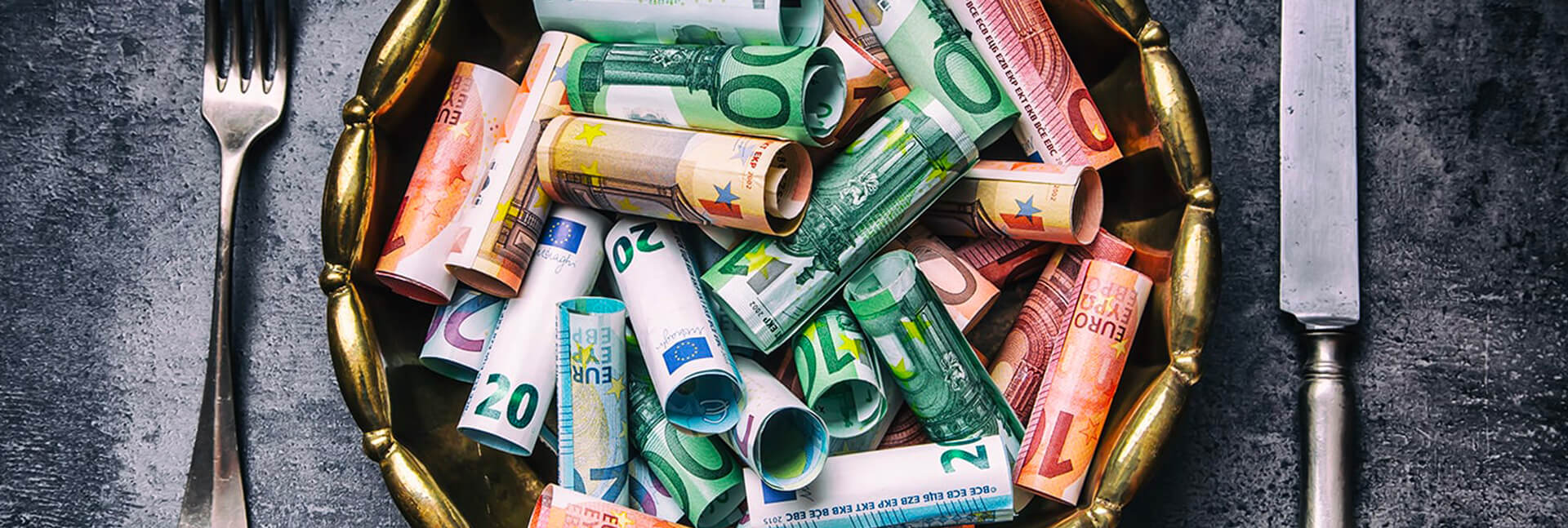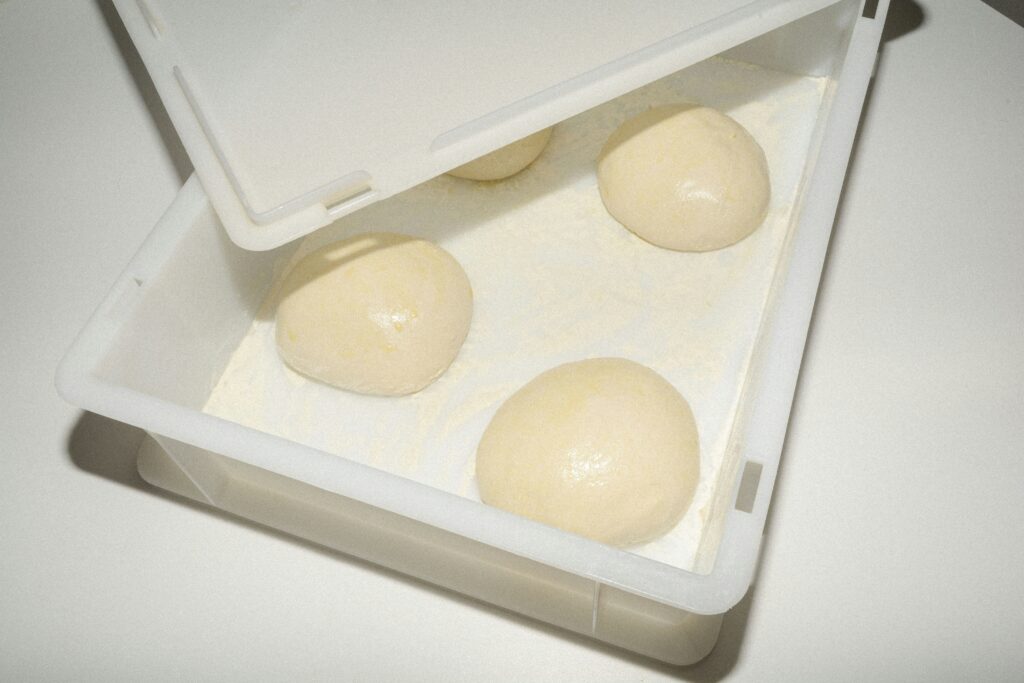
The necessary information for proper pizzeria management, through understanding food cost and the changes taking place in the industry.
What is food cost and what does it mean for the management of a pizzeria? Before explaining it, it is necessary to understand what is meant by management. According to a recent survey by Unioncamere (the Italian public institution representing the union of Commerce, Industry, Handicrafts and Agriculture Chambers), 45% of restaurants, pizzerias or bars close their doors after the first three years of activity; this percentage increases after five years from the inauguration, when three out of four restaurants close their doors. A figure that is cause for reflection on the entrepreneurial capacity driving the restaurant industry in recent years. What are the reasons for these closures? There are many, starting with the widespread and growing willingness to invest in eating out by people who are fundamentally unprepared to do so. A market that never stopped growing until the year of Covid, in which, from the outside, it seems very attractive and easy to create an identity and have customers. “What would it take to make a pizza?” many people seem to say. Behind every entrepreneurial choice, however, there must be a project, an examination of costs and revenues and a certain initial economic availability; otherwise it is better to give up.
This is especially true in an industry such as eating out – whether it is a restaurant or a pizzeria – where the elements to be kept under control are so many and so unpredictable that they require great fortitude and a marked tendency to rationality that is not common. How should the restaurant be, in which position should it be located, how many seats should be there to create a profit, which menu will be able to get to clients’ hearts, what background music should be chosen, how to find the right staff, what revenue should be obtained from a pizza recipe, how many drinks should be kept in stock, will people come, how to make them come, how to retain them. Faced with these questions – and we have reported only some of them – you should realize that it is not enough to know how to make a pizza, even though it is very important.

Hence, the importance of the concept of food cost, which helps to resolve many of the above questions. This term is used to indicate all of the production, management, conservation and service costs necessary for the food – in our case, pizza – to reach the customer, generating the right profit for the owner of the pizzeria. In fact, as unfortunately often happens, it is not enough to have a vague idea of how much do the proposals on the menu cost or to get an approximate estimate. Doing so, you quickly become part of the negative data expressed by the research we mentioned at the beginning.
Determining food cost is not an easy exercise for anyone but some tips can come in handy:
- Make a prediction of how many pizzas you will sell based on previous sales and on the demand of the period.
- Avoid waste as much as possible or otherwise always keep track of what is sold little from the pizza menu. One of the most common mistakes is to make menus with a lot of proposals; it creates confusion in the customer, it is no longer an element of attraction and it gives the idea of using poor or low cost raw materials.
- Always have up-to-date pizzeria inventories, on a regular basis
- Also keep track of staff consumptions, as their pizzas are part of the consumed food anyway, even if not sold.
With these small suggestions, let’s begin to determine the food cost of pizza, taking as an example the one we find in every pizzeria in Italy, that is pizza Margherita.
Let’s assume that the cost of the raw materials to make a pizza Margherita is the following:
0.19€ (flour)
0.10€ (water, yeast, salt, oil)
0.13€ (tomato)
0.89€ (mozzarella)
0.05€ (basil)
The total makes 1.36€. That’s interesting, you may say, as in Italian pizzerias, a pizza Margherita is sold on average at a price ranging from 5.6 to 7 Euros.
However, the problem is that a proper food cost must take into account many other factors, such as:
- Cost of mise en place;
- Cost of staff and owners
- Cost of the take-away box
- Amortization of the cost of dough equipment (mixer, counter, sink, hopper, scale)
- Amortization of the cost of pizza equipment (oven, refrigerator, peels);
- Amortization of the cost of dining room equipment (tables, chairs, cutlery);
- Rental and Facility costs;
- Overhead costs (taxes, cleaning, maintenance, safety and environment, haccp, advertising)
Only by summing up all these values, divided by days of work, will it be possible to obtain the real cost of the pizza Margherita requested by the customer. And to this sum you will have to apply a 20% mark-up in order to get an honest profit in the business.

What do you get from all this? First of all, doing this work is not as easy as it seems on the outside. Food is emotion, preparing it is passion, there are no doubts about this, just as there are no doubts about how important it is to offer quality proposals, which are able to win the palate of the customers. We have clearly seen that the price of raw materials is the one that less affects the final cost; for this very reason, making pizza with absolute quality raw materials and the minimum of waste gives the place extra points and higher possibilities of being chosen.
A well designed menu taking into account the food cost has to propose the right number of pizzas, neither too many nor too few, in order to offer the customer an adequate choice. At the same time, it is necessary to keep under control the purchase of the ingredients used for the preparations, without risking unnecessary waste. All of these steps are crucial in order to create an appropriate menu, keep costs down, identify the most suitable market segment to enter, and promptly adjust one’s offer so as to maximize profits.
These reflections are part of the radical change taking place in the world of pizzerias. In fact, in addition to being the most consumed food in the world, today pizza is a symbol of strong sociality, due to its simplicity of consumption; moreover, since the ingredients are always clearly visible, the moment of consumption is lived serenely and without risks for food safety. Just think about how pizzerias are changing too, with an ever decreasing number of tables and with beautiful furnishings, often of design. Here people no longer sit for the quick time of the pizza but spend the whole evening, maybe even combining other dishes to it.
Moreover, despite this uncertain moment, pizza is always in first place also with regard to the food delivery phenomenon itself; plus, consumers are more aware and desire to have a product that is understandable in every aspect. They now pay more attention to everything related to food, and are more and more oriented to choose places and pizza makers who decide to put the great quality of ingredients first.
So, making pizza means responding to a need that is now embedded in people’s habitual choices and tastes. It seems unbelievable that a very simple disc of dough invented in Naples in the 18th century has now conquered the whole world; and yet, that’s exactly what happened and, in all likelihood, this will be something that will last and develop for a long time to come.
The reason? There is no single reason, but the most important one, the one that made it international, is that pizza is adaptable to every food custom. There are no raw materials that cannot be combined with this disc of dough. Of course, according to Italian tradition, it must have certain basic ingredients, that are tomato, mozzarella and extra virgin olive oil. But also in Italy, as well as in the rest of the world, pizzas are being made with every possible food and, even though one may not agree, this is its power.
The important thing is to never think it is trivial, just like its preparation is not trivial and, even less, the management of the pizzeria.



